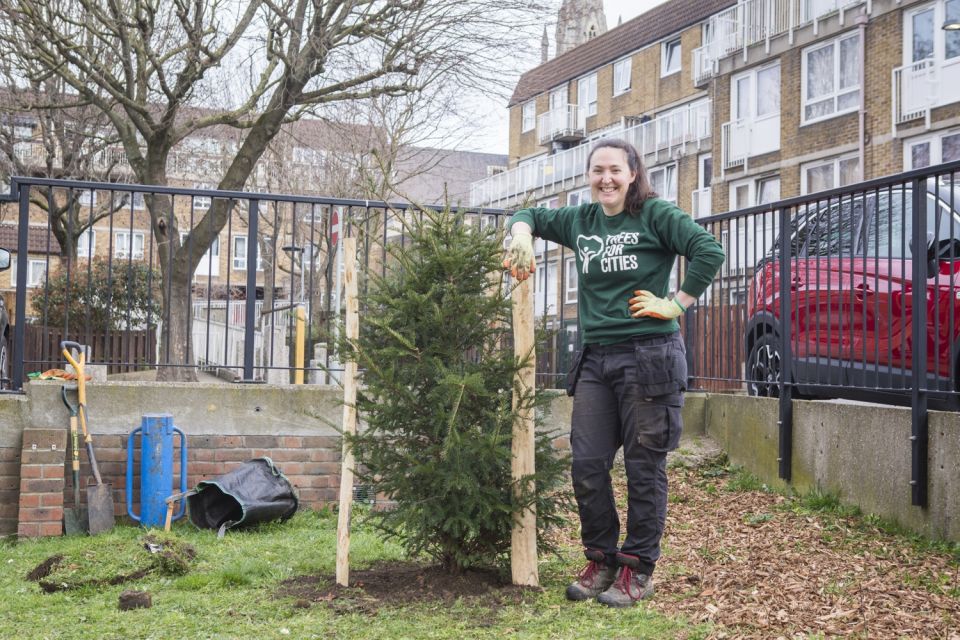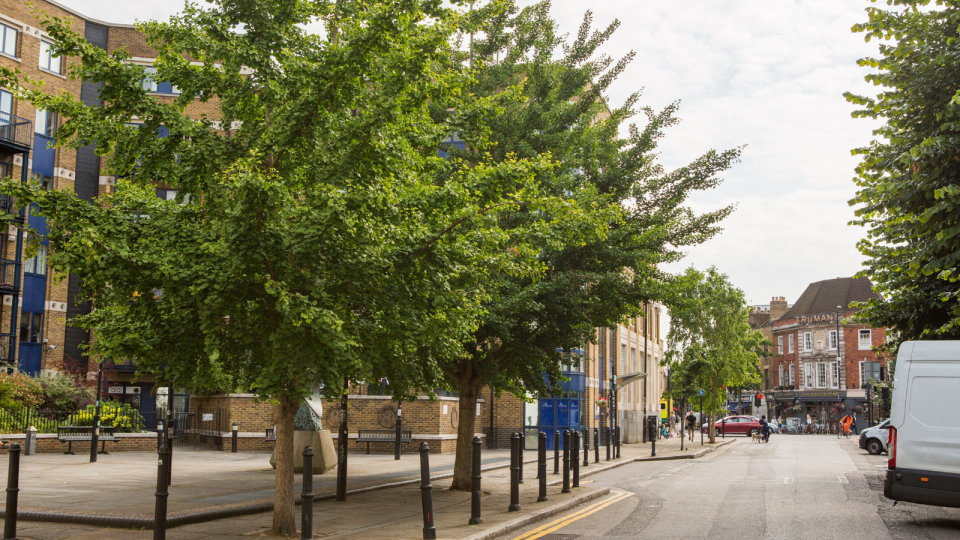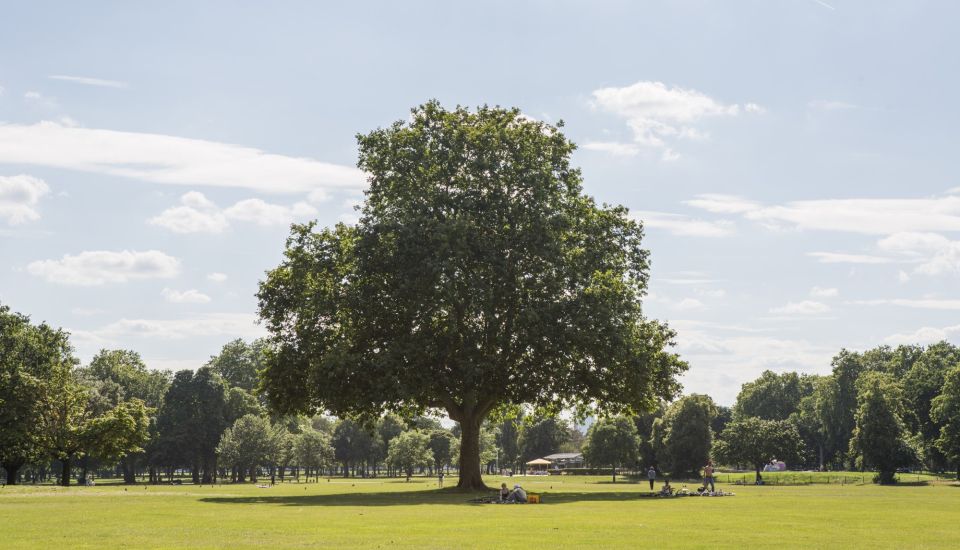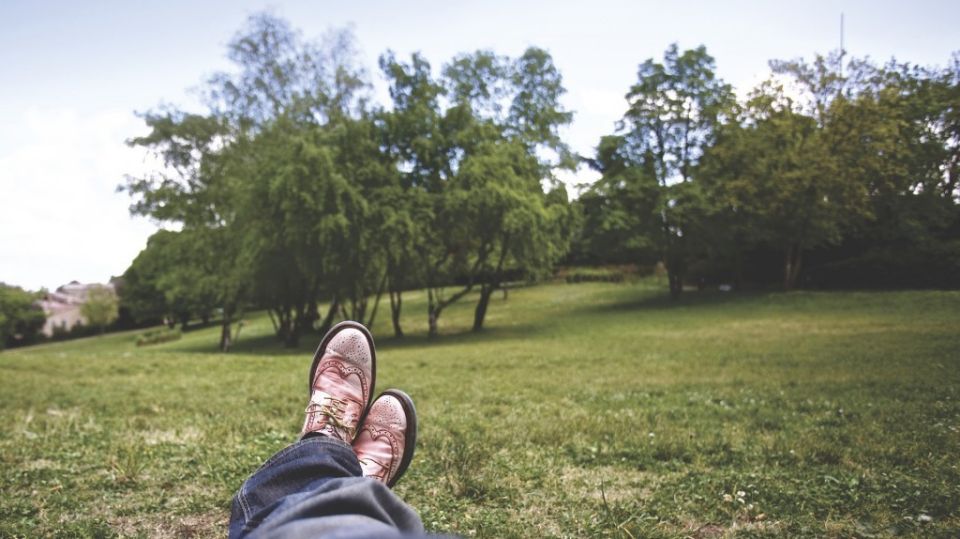Trees in our cities: 10 reasons we need to plant more

Urban trees are pretty amazing. Not only do they provide a source of beauty and interest in the otherwise bleak urban landscape, they have crucial environmental benefits and give all us city-dwellers a place to relax, away from the stresses and strains of everyday life.
But our urban trees have come under increased threat in recent decades and we are now at risk of losing these integral parts of our towns and cities. With 84% of us in the UK now living in urban areas, we now need our trees more than ever.
1. They produce oxygen
It has been said that if trees produced free WiFi, we would be planting them in our cities like crazy. What they do produce is oxygen, an element which is fundamental to our existence on this planet!
In a single season, 1 mature leafy tree can produce enough oxygen to allow 10 of us to breathe. This is most important of all in densely populated and polluted areas like cities, where average oxygen levels are expected to be at least 6% lower.

2. Sequester and store carbon
Trees play an important role in what we call carbon sinks. This is the storing of carbon as part of the carbon cycle and is an important part of helping to mitigate the effects of climate change.
In a year, a single mature tree can absorb up to 48 pounds of carbon dioxide. It’s thought that globally our forests absorb 40% of manmade CO2 emissions before it reaches our outer atmosphere where it can trap more heat. Because of their size and density, trees are much better at this than smaller plants.
To give you an idea of just how good they are at storing carbon – it’s estimated that 2,367,000 tonnes of carbon is stored in London’s trees alone, with an estimated value of £147million to the UK's economy.
3. They support the management of air pollution
Under the right conditions, tree and vegetation barriers can reduce the pollutants we're exposed to by up to half.
On a grand scale, trees do something called deposition, which is the removal of a small fraction of some air pollutants through capture onto leaf surfaces, but when we're talking about urban environments, vegetation plays less of a role in reducing air pollution, and it's more about how they affect airflow.
Dr James Levine, Senior Research Fellow at the University of Birmingham
4. Support urban flood risk management
A single mature, leafy tree can absorb up to 450 litres of water through its roots every day, as well as capture rainwater on the surface of its leaves. Their roots also reduce soil erosion in the ground and slow the filtration of water into our cities' drainage networks.
This is particularly important in cities where a large proportion of the ground surface is made up of impermeable materials, like tarmac and concrete. When we get a sudden downpour, this can quickly cause flash flooding if the water has nowhere to go. Trees to the rescue!
5. They’re keeping things cool
As well as absorbing water, trees also release it as water vapour through evapotranspiration from their leaves, which produces a cooling effect. They also provide shade for the ground and buildings, resulting in further cooling and less energy usage. This cooling helps against the urban heat island effect, where towns and cities are hotter than their rural counterparts.
The overall cooling effect of a single, mature tree an average is equivalent to 10 air conditioning units running for 20 hours in a day. Collectively, trees can cool urban areas by up to 8 degrees Celcius!

6. A helping hand for wildlife
Important species in their own right, trees also provide a source of food and habitat to a plethora of other species in our urban environments – bats, birds, badgers, insect, other plants, fungi and mosses, to name a few!
7. They’re good for our mental health and wellbeing
It’s not all about the physical environment; trees also help us with our ability to cope mentally with life in an artificial urban environment.
Being around nature, specifically trees, has been shown to reduce the levels of cortisol in our brains. This is otherwise known as the stress hormone, and lowering it can help to reduce the symptoms of anxiety and stress. We are also more likely to leave our homes, go outside and exercise if there are lovely, welcoming trees and green spaces.

8. Our urban trees are getting old
Most of the beautiful, mature trees we see in our cities today are here thanks to forward thinking tree enthusiasts who planted them as long as 100 years ago for us to enjoy today. But these trees are coming to the end of their life cycles and reaching old age.
The problem we face now is that it takes a long time for a tree to reach maturity. So if we don’t increase the levels of tree planting soon, we may have a long wait until we have more iconic trees to replace the ageing tree population. We've been planting since 1993 and have watched our young whips grow into magnificent urban trees, but we must keep planting more, and protecting the ones we do have.
9. Everyone’s heading to the cities
84% of the UK are now living in urbanised environments and there are no signs of this slowing down. It is projected that with the increase in urbanisation along with expected overall global population growth, there could be another 2.5 billion people in urban populations by the year 2050.
Did you know that between 2006 and 2012 the UK lost 222,000 hectares of green space to urban sprawl? That is roughly equivalent to 22,000 football pitches. We now need our trees more than ever.
10. Because we love them
Trees have been part of the natural landscape since humans evolved on Earth. We have a deep, innate desire to be around them, even if you aren’t aware of it. Next time you're out on a tree-lined street, imagine it without those trees. Would you prefer to see more grey than green?
Let’s be the generation that plants more trees than we cut down
We're on a mission to ensure that everyone has equal access to urban trees - but we need your support. Whether it's a one-off donation, or you become a regular monthly donor - your generosity literally gets trees in the ground.
Support us todayFind out more
Donate to Trees for Cities and together we can help cities grow into greener, cleaner and healthier places for people to live and work worldwide.
Donate